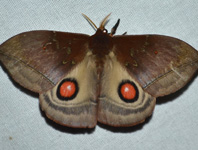Abstract
The genus Homoeoxipha contains 11 species worldwide with 4 recorded from China. In this study, we reconstructed the gene tree based on COI gene, and reported one new species, H. oscillantenna He sp. nov. The new species is similar to H. eurylobus Ma, Liu & Zhang, but differs in the color of fore femur and the structure of male genitalia. Calling songs and nymph morphology are also provided. The type specimens are deposited in the Museum of Biology, East China Normal University (ECNU).
References
Caudell, A.N. (1927) On a collection of orthopteroid insects from Java made by Owen Bryant & William Palmer in 1909. Proceedings of the United States National Museum, 71, 1–42.
https://doi.org/10.5479/si.00963801.71-2675.1
Chopard, L. (1968) Fam. Gryllidae: Subfam. Mogoplistinae, Myrmecophilinae, Scleropterinae, Cachoplistinae, Pteroplistinae, Pentacentrinae, Phalangopsinae, Trigonidiinae, Eneopterinae; Fam. Oecanthidae, Gryllotalpidae. In: Beier, M. (Ed.), Orthopterorum Catalogus. Dr. W. Junk N.V., Gravenhage, pp. 213–500.
Cigliano, M.M., Braun, H., David, C.E. & Otte, D. (2021) Orthoptera Species File. Available from: http://orthoptera.speciesfile.org/ (Accessed 13 Mar. 2021)
He, Z.-Q. (2018) A checklist of Chinese crickets (Orthoptera: Gryllidea). Zootaxa, 4369 (4), 515–535.
https://doi.org/10.11646/zootaxa.4369.4.4
He, Z.-Q., Shen, C.-Z. & Wu, X. (2020) The first phylogenetic study of sword-tail crickets from China inferred from COI, 18S and 28S genes, with the establishment of two new genera and description of one new species (Orthoptera: Grylloidea: Trigonidiidae). Zootaxa, 4890 (1), 119–128.
https://doi.org/10.11646/zootaxa.4890.1.7
Ichikawa, A. (1999) On the scientific name of so called Homoeoxypha lycoides in Japan. Tettigonia, 1, 107–108.
Ichikawa, A., Ito, F., Kano, Y., Kawai, M., Tominaga, O. & Murai, T. (2006) Orthoptera of the Japanese archipelago in color. Hokkaido University Press, Sapporo, 687 pp.
Kalyaanamoorthy, S., Minh, B.Q., Wong, T.K.F., von Haeseler, A. & Jermiin, L.S. (2017) ModelFinder: fast model selection for accurate phylogenetic estimates. Nature Methods, 14, 587–589.
https://doi.org/10.1038/nmeth.4285
Ma, L.-B., Liu, Y. & Zhang, Y.-L. (2016) Revision for the swordtail cricket genus Homoeoxipha (Grylloidea: Trigonidiidae: Trigonidiinae) from China. Entomological Science, 19, 323–336.
https://doi.org/10.1111/ens.12223
Nguyen, L.T., Schmidt, H.A., von Haeseler, A. & Minh, B.Q. (2014) IQ-TREE: a fast and effective stochastic algorithm for estimating maximum-likelihood phylogenies. Molecular Biology and Evolution, 32, 268–274.
https://doi.org/10.1093/molbev/msu300
Otte, D. & Alexander, R.D. (1983) The Australian Crickets (Orthoptera: Gryllidae). Monograph of the Academy of Natural Sciences of Philadelphia. Allen Press, Philadelphia, Pennsylvania, 477 pp.
Pan, C.-Y., Hu, J., Zhang, X. & Huang, Y. (2006) The DNA barcoding application of mtDNA COI gene in seven species of Catantopidae (Orthoptera). Entomotaxonomia, 28, 103–110.
Ratnasingham S. & Hebert P.D.N. (2007) BOLD: The Barcode of Life Data System (www.barcodinglife.org). Molecular Ecology Notes, 7 (3), 355–364.
https://doi.org/10.1111/j.1471-8286.2007.01678.x
Rentz, D. & Su, Y.N. (2019) A Guide to Crickets of Australia. CSIRO Publishing, Clayton South, 398 pp.
https://doi.org/10.1071/9781486305070
Saussure, H. (1874) Etudes sur les insectes orthoptères, famille des gryllides. Mission scientifique au Méxique et dans l'Amérique centrale, 6, 296–515.
Walker, F. (1869) Catalogue of the specimens of Dermaptera Saltatoria in the collection of the British Museum. Trustees of the British Museum, London, 423 pp.
Xia, K.-L. & Liu, X.-W. (1993) Orthoptera: Tettigonioidea and Grylloidea. In: Huang, F.-S. (Ed.), Insects of Wuling Mountains Area, Southwestern China, 1993, pp. 87–112.
Zhang, D., Gao, F., Jakovlić, I., Zou, H., Zhang, J., Li, W.-X. & Wang, G.T. (2020) PhyloSuite: an integrated and scalable desktop platform for streamlined molecular sequence data management and evolutionary phylogenetics studies. Molecular Ecology Resources, 20, 348–355.
https://doi.org/10.1111/1755-0998.13096


